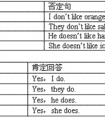Thanks for ________to dinner.[ ]A. invitation usB. inviteus C. inviting us D. inviting our-八年级英语
2. 用 it 作形式主语,把动名词(真实主语)置于句尾作后置主语。
动名词做主语时,不太常用 it 作先行主语,多见于某些形容词及名词之后。例如:
It is no use telling him not to worry.
常见的能用于这种结构的形容词还有:better,wonderful,enjoyable,interesting,foolish,difficult,useless,senseless,worthwhile,等。
注意:important,essential,necessary 等形容词不能用于上述结构。
3. 用于“There be”结构中。例如:
There is no saying when he'll come.很难说他何时回来。
4. 用于布告形式的省略结构中。例如:
No smoking ( =No smoking is allowed (here) ). (禁止吸烟)
No parking. (禁止停车)
5. 动名词的复合结构作主语
当动名词有自己的逻辑主语时,常可以在前面加上一个名词或代词的所有格,构成动名词的复合结构
(这时,名词或代词的所有格做动名词的逻辑主语)。
动名词的复合结构也可以在句中作主语。例如:
Their coming to help was a great encouragement to us.
二、动名词作宾语
1.作动词的宾语
某些动词后出现非限定性动词时只能用动名词作宾语,不能用不定式。常见的此类动词有:
admit, appreciate, excuse, stand, advise, allow, permit, avoid, consider, enjoy, finish
They went on walking and never stopped talking.他们继续走,说个不停。
I found it pleasant walking along the seashore.在海滩上走真是乐事。
Mark often attempts to escape being fined whenever he breaks traffic regulations.
每当马克违反交通规则时,他常常企图逃避罚款的处分。
2.作介词的宾语
We are thinking of making a new plan for the next term. 我们正考虑为下学期制定新的计划。
Shall we have a rest or get down to doing our work? 我们休息呢还是开始干活?
3.作形容词的宾语
The music is well worth listening to more than once. 这种曲子很值得多听几遍。
We are busy preparing for the coming sports meet. 我们正为马上到来的运动会忙着做准备。
三、动名词作表语
动名词作表语时句子主语常是表示无生命的事物的名词或what引导的名词性从句。
表语、动名词与主语通常是对等的关系,表示主语的内容,主语、表语可互换位置。
Your task is cleaning the windows. 你的任务就是擦窗户。
(Cleaning the windows is your task.)
What I hate most is being laughed at. 我最痛恨的就是被别人嘲笑。
(Being laughed at is what I hate most.)
四、动名词作定语
动名词作定语往往表示被修饰词的某种用途。如:
a walking stick =a stick for walking=a stick which is used for walking
a washing machine=a machine for washing=a machine which is used for washing
a reading room=a room for reading=a room which is used for reading
a measuring tape=a tape for measuring=a tape which is used for measuring
sleeping pills=pills for sleeping=pills which is used for sleeping
动名词也有时态和语态的变化,如表所示(以及物动词write为例),不及物动词没有语态的变化。
| 时态、语态 | 主动 | 被动 |
| 一般式 | writing | being written |
| 完成式 having written |
having been written |
1) 动名词做主语时,谓语动词为单数
2) 在动名词和不定式中,作为介词的宾语是动名词
3) 动名词的否定直接在其前加否定词,通过代词的宾格或所有格形式给出逻辑主语
例:I would appreciate you calling back this afternoon.
4) 有些词后只能接动名词
acknowledge;admit; advise;advocate;allow;appreciate; avoid; celebrate; consider; contemplate; defer; delay; deny;
detest; discontinue; dislike; dispute; enjoy; it entails; escape; excuse; explain; fancy; feel like; finish; forgive; can’t help;
hinder; imagine; it involves; keep; it means; mention; mind; miss; it necessitates; pardon; postpone; practice; prevent;
recall; report; resent; resist; risk; suggest; understand...
5) 另外还有一些接-ing形式的常用说法
it’s no good; it’s no/little/hardly any/ use; it’s not/hardly/scarcely use; it’s worthwhile; spend money/time; there’s no;
there’s no point in; there’s nothing worse than; what’s the use/point
6) 有些词后面加不定式和动名词均可
remember,forget,try,stop,go on,continue,stop,regret,cease,mean后面均可用不定式和-ing形式,但意义截然不容。
例:remember to do/doing:
①I remembered to post the letters.(指未来/过去未来将要做的动作)
②I remembered posting/having posted the letters.(我记得做过这个动作)
forget与remember的用法类似。
regret的用法:
①I regret to inform you that…(我很遗憾地通知你……)
②I regretted having left the firm after twenty years.(为了“二十年前的离开”而遗憾。)
try to(努力)与try +–ing(试验):
①You really must try to overcome your shyness.
②Try practicing five hours a day.
考点名称:人称代词
- 人称代词:
人称代词是用来表示人的代词,有单数和复数之分,有主格和宾格之分。人称代词的主格在句中作主语;人称代词的宾格在句中作宾语,也可作动词或介词的宾语。
主格:I, we, you, he, she, it, they在句子中作主语
宾格:me, us, you, him, her, it, them在句子中作宾语
He and I are in the same class. 我和他在同一个班级。
Can you see them in the street? 你能看见他们在街上吗? 人称代词在句中的作用:
1)主格作主语。如:
I am Chinese.我是中国人。
2)宾格作宾语,放在及物动词或介词之后,有时还可以在口语中用作表语。如:
①I don't know her.我不认识她。(动词宾语)
②What's wrong with it?它怎么了?(介词宾语)
③-Open the door,please.
3)作表语
作表语一般用主格, 但在口语中也常用宾格
I saw at once it was her.我一下子看到了她。
It's me.请开门,是我。(表语)
4)作同位语
作同位语是用宾格
We ,us ,there,will be able to fulfill the task.我们三人就能完成这项任务。- 主宾格的替换:
一、宾格代替主格
a.在简短对话中,当人称代词单独使用或在not后,多用宾语。
---- I like English. --我喜欢英语。
---- Me too. --我也喜欢。
---- Have more wine? --再来点酒喝吗?
---- Not me. --我可不要了。
b.在表示比较的非正式的文体中,常用宾格代替主格。但如果比较状语的谓语保留,则主语只能用主格。
He is taller than I/me.
He is taller than I am.
二、主格代替宾格
a.在介词but,except后,有时可用主格代替宾格。
b.在电话用语中常用主格。
---- I wish to speak to Mary. --我想和玛丽通话。
---- This is she. --我就是玛丽。
注意:在动词be或to be后的人称代词视其前面的名词或代词而定。
I thought it was she. 我以为是她。 (主格----主格)
I thought it to be her. (宾格----宾格)
I was taken to be she. 我被当成了她。 (主格----主格)
They took me to be her.他们把我当成了她。 (宾格----宾格) 人称代词用法:
一、人称代词的宾格在句中作宾语,往往用在动词或介词后面。
例:1.Listen to me,Dad.
2.Peter is sitting behind me.
3.Let me got here now.
4.Give me an orange,please.
二、you既是"你"或"你们"的主格,又是它们的宾格;her既是"她"的所有格,又是它的宾格。我们可以根据它们在句子中的位置来判断它们属于主格、所有格还是宾格。
三、and是一个我们常用来连接两个词的连接词。它虽然与介词with有同样的意思,但它的前后可以是人称代词的主语,也可以是人称代词的宾格,而with只能跟人称代词的宾格。
如:You and I are going to school.
- 最新内容
- 相关内容
- 网友推荐
- 图文推荐
上一篇:根据句子意思,用括号内所给单词的正确形式填空。1. There are seven ________ ( day ) in a week. 2. Where's his classroom? It's on the ________( one ) floor of-七年级英语
下一篇:Scott spent the _______day _______with his grandpa.[ ]A.all; fishingB.all; to fishC.whole; fishing D.whole; to fish-八年级英语
零零教育社区:论坛热帖子
| [家长教育] 孩子为什么会和父母感情疏离? (2019-07-14) |
| [教师分享] 给远方姐姐的一封信 (2018-11-07) |
| [教师分享] 伸缩门 (2018-11-07) |
| [教师分享] 回家乡 (2018-11-07) |
| [教师分享] 是风味也是人间 (2018-11-07) |
| [教师分享] 一句格言的启示 (2018-11-07) |
| [教师分享] 无规矩不成方圆 (2018-11-07) |
| [教师分享] 第十届全国教育名家论坛有感(二) (2018-11-07) |
| [教师分享] 贪玩的小狗 (2018-11-07) |
| [教师分享] 未命名文章 (2018-11-07) |

![Which of the following can you probably see in the meeting room? [ ]A. B. C.D. -七年级英语](http://www.00-edu.com/d/file/ks/4/2/dongmingci/2020-01-08/small97361980a56115e1c9237567439904fe1578422951.jpg)

![—Can the boy finish_____ the book in about a week? —I think he can. [ ]A. read B. reading C. to read D. reads -八年级英语](http://www.00-edu.com/d/file/ks/4/2/dongmingci/2020-01-08/smallfa4d713075e249356362fe7392193a301578421751.png)


